The Library of Consciousness
of Consciousness

If science is correct in determining the Earth to be composed of the same stuff which makes up the cosmos, and if life is the technology through which such stuff becomes animated, then life, which now appears to be the exception to the rule within the physical cosmos, could eventually become the rule.

Cosmology is the study of the origin, evolution, and eventual fate of the universe. Modern cosmology grew from ideas before the twentieth century, but made huge strides when Albert Einstein published his theory of general relativity in 1915. General relativity explains gravity and the structure of spacetime. It allows cosmologists to build mathematical models that describe the whole universe and track its changes over time, starting from the first moments after the Big Bang around 13.8 billion years ago.
One major area of research in cosmology is understanding the universe’s beginning. Evidence shows the universe expanded rapidly from an extremely hot, dense state into the current cooler cosmos we observe. Important clues about these first moments come from the Cosmic Microwave Background radiation, which is leftover heat from early universe. Precision maps of this radiation made in the past thirty years reinforce the Big Bang theory and give cosmologists better tools to test ideas. Other active research looks into dark matter, dark energy, the formation of the first stars and galaxies, and the eventual fate of the universe. Improved observations and complex simulations on powerful computers will help reveal more secrets of outer space and our place within its grand scale.

A Clarification
Reflections on Two Converse Forms of Spirit
Teilhard de Chardin identifies two distinct spiritual paths: unity through “relaxation” (Eastern pantheism) where individual egos dissolve into a common foundation, and unity through “tension” (Western mysticism) where individuals become more themselves while converging toward a universal center. He argues that cosmic evolution favors the latter path, where true union differentiates rather than fuses, and calls for a new Western mysticism that combines personalizing love with cosmic totalization.

A Major Problem for Anthropology
Teilhard envisions humanity not as evolution’s finale, but as its awakening. As our minds and societies knit into a single global consciousness—the noösphere—evolution becomes self-aware, guiding itself through thought and collaboration. In this new phase, life chooses its own becoming and reaches out toward the ultra-human.

A Mental Threshold Across Our Path
From Cosmos to Cosmogenesis
Teilhard unveils a universe not static but alive—cosmogenesis, a great unfolding where matter rises toward spirit, complexity begets consciousness, and humanity discovers itself as evolution aware of itself. In this vision, evil is byproduct, individuality deepens in unity, and God becomes the animating center: love driving the cosmos toward its destined convergence.

A Note on Progress
A cosmic battle rages between those who proclaim “We are moving!” and the immobilists who insist “Nothing changes.” Pierre Teilhard de Chardin passionately argues that the universe progresses through mankind’s collective evolution of consciousness. For him, Christianity’s future lies in recognizing this biological genesis unfolding—the cosmos physically realizing its psychic fulfillment through humanity striving to form one united Body of Christ.

A Phenomenon of Counter-Evolution in Human Biology
or the Existential Fear
Teilhard explores the “existential fear” that grips modern humans as we confront the vastness of the universe and our seeming insignificance within it. He believes this fear stems from our growing awareness of cosmic immensity, our isolation, and the threat of depersonalization. However, he proposes a radical shift in perspective: by viewing the universe as convergent rather than chaotic, we can transform our terror into hope. This “convergent universe” is one that’s moving towards greater complexity and consciousness, ultimately leading to a unifying center that gives our existence profound meaning and purpose.

A Psychedelic Point of View
Buck the status quo! Rebel philosopher Terence McKenna shook things up in this closing speech after a month of being scholar-in-residence at Esalen, arguing that reality escapes our rational grasp. He chided science and philosophy's paltry models that diminish nature's infinitude. Seeking to spur his audience from passive acceptance, McKenna called to revere expanded consciousness. He urged toppling the assumptions bolstering dominator culture to midwife more liberated, psychedelically-attuned societies. By trusting our intuition's cosmic tether, we can transform reality into something stranger and more wonderful than we suppose.

Adventures of Ideas
A mind-bending odyssey through the realms of human thought and civilization, Whitehead’s Adventures of Ideas dissects the evolution of ideas, from ancient Greece to modern times, unveiling the intricate tapestry of philosophical concepts that shape our world. He unravels the interplay between science, philosophy, and culture, challenging readers to embark on an intellectual adventure like no other.
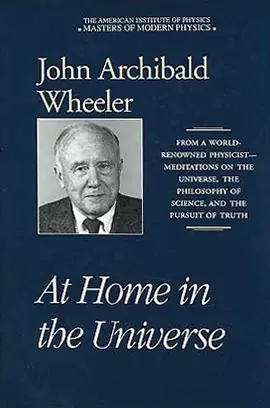
At Home in the Universe
At Home in the Universe explores the profound role of human consciousness in the shaping of reality. Wheeler delves into quantum physics, cosmology, and philosophy, proposing that observers play a critical part in the universe's existence. He introduces ideas like "participatory anthropic principle" and "it from bit," suggesting that reality is information-based and that the act of observation helps bring the universe into being. The book blends science with deep philosophical inquiry.

At Home in the Universe
The Search for the Laws of Self-Organization and Complexity
Stuart Kauffman’s At Home in the Universe unveils a scientific revolution centered on spontaneous order in complex systems. Kauffman argues that complexity itself triggers self-organization, revealing life as a natural outcome rather than a chance event. From cell development to cultural evolution, he explores how this principle shapes diverse phenomena. Praised as a visionary by Stephen Jay Gould and Philip Anderson, Kauffman’s work extends Darwin’s theory and offers profound insights into the essence of life.

At the Interface
Technology and Mysticism
What happens when a mystic and a futurist debate humanity’s fate? Alan Watts and Arthur C. Clarke tackle our future from two unique perspectives. Clarke champions technological solutions, from synthetic food to space exploration, while Watts argues for a spiritual evolution—a change in consciousness and our relationship with nature to solve our most pressing problems.

Awakening to Archaic Values
A weekend workshop in which Terence encourages humanity to return to harmonic habits which have been lost in the tide of time.

Build Your Own Damn Wagon
(Laws and Freedom, Habits and Novelty)
"Do not watch, do not consume," implores Terence McKenna, inviting us on a thought-provoking journey to reclaim our humanness. By building our own conceptual wagons, rather than riding ready-made vehicles of meaning, we can travel along unique paths of critical thinking. Once within our own virtual worlds, the wonder of our distinctive minds will be open for discovery.
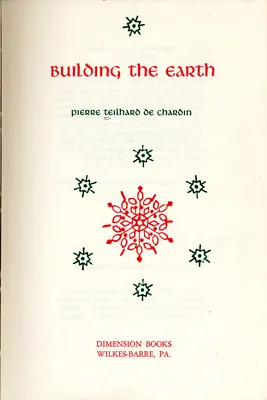
Building The Earth
A visionary and hopeful book on humanity's future relationship to the planet from which it arose, Teilhard outlines a new psychological state of awareness in which individual humans unite into planetary Personhood. Paragraphs are arranged in verse and interspersed with delicate graphic illustrations.

Can Biology, Taken to its Extreme Limit, Enable us to Emerge into the Transcendent?
Teilhard de Chardin argues that biological evolution relies on a “zest for life” or survival instinct. If humans perceive the universe as closed with no transcendent escape from total death, this zest would vanish, halting evolution. Thus, evolution can only continue if seen as irreversible and transcendent, ultimately leading to God.

Centrology
An Essay in a Dialectic of Union
Teilhard proposes a guiding hidden rule present in the universe, leading everything from simplicity to complexity and consciousness. He suggests that as cosmic particles evolve, they become more complex and conscious, ultimately converging toward a unifying Omega point. This vision offers a fresh perspective on the universe, blending science and philosophy to reveal a grand, interconnected cosmic journey.
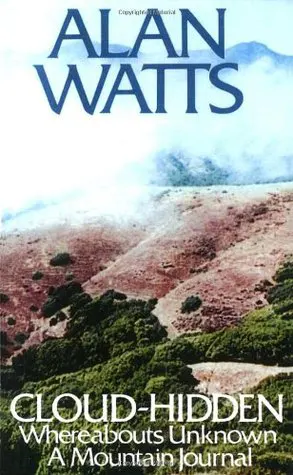
Cloud-Hidden, Whereabouts Unknown
A Mountain Journal
Over the course of nineteen essays, Alan Watts ruminates on the philosophy of nature, ecology, aesthetics, religion, and metaphysics. Assembled in the form of a mountain journal, written during a retreat in the foothills of Mount Tamalpais in California, Cloud-Hidden, Whereabouts Unknown is Watts’ meditation on the art of feeling out and following the watercourse way of nature, known in Chinese as the Tao. Embracing a form of contemplative meditation that allows us to stop analyzing our experiences and start living into them, the book explores themes such as the natural world, established religion, race relations, karma and reincarnation, astrology and tantric yoga, the nature of ecstasy, and much more.
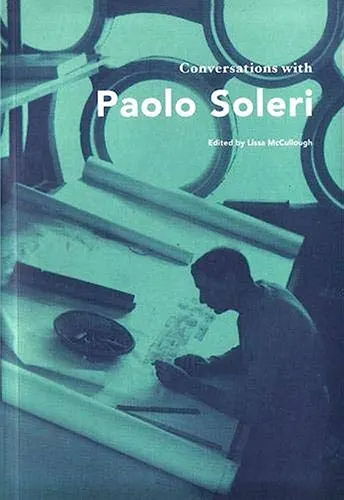
Conversations with Paolo Soleri
Paolo Soleri's architectural-philosophical thinking sets forth fundamental reformulations to address the globalizing world's most urgent environmental, urban infrastructural, and socio-ethical problems. In this book, Soleri's most recent ideas are distilled into an accessible overview for the general reader. Soleri proposes to transform our societal systems while raising sights to a radically long-term and humanistic perspective. Among the interrelated concepts outlined here are Soleri's highly original ideas of orchid and forest, the city as hyper-organism, the urban effect, and the love project. These inspiring ideas are acutely timely in light of current environmental trends: responding to global climate change, radically reducing oil dependence, embracing frugality and reduced consumption, while simultaneously confronting issues of suburban sprawl, urban renewal, smart land use, and wise food production.
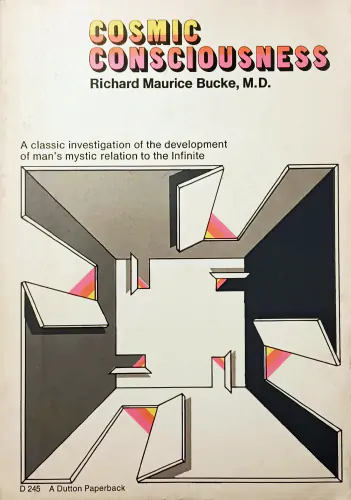
Cosmic Consciousness
A Study in the Evolution of the Human Mind
Cosmic Consciousness explores the profound, transformative experience of heightened awareness that transcends ordinary perception. Richard Bucke reveals glimpses of a deeper, universal truth, where time and space dissolve, and individuals feel a deep connection to all of existence. Those who attain this state are filled with peace, love, and enlightenment, moving beyond the self to embrace the infinite. He offers hope that humanity’s evolution may one day lead to a collective awakening, unlocking boundless potential for spiritual growth and unity.

Cosmic Life
Teilhard de Chardin seeks to harmonize his ardent faith with a boundless love for the cosmos. He finds solace in the belief that the incarnation unites all. Thus, surrendering oneself to the cosmic forces and gently guiding them towards good enables all beings to participate in softly unfolding a new era of harmony. Cosmic Life was the first of Teilhard’s extant writings in his characteristic style. Knowing what risks he was exposed to at the warfront, he wrote it as his intellectual testament, and it contains in embryo all that was later to be developed in his thought; the “fire in his vision” which he tried to communicate.
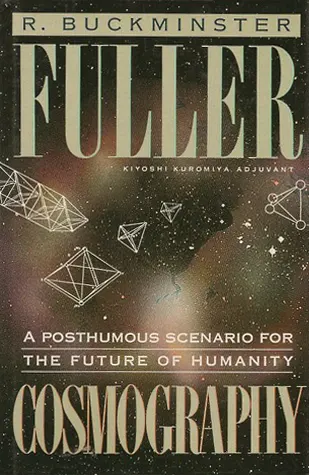
Cosmography
A Posthumous Scenario for the Future of Humanity
An ambitious synthesis of Fuller’s lifetime of interdisciplinary work, spanning geometry, systems theory, design, and cosmology. He outlines synergetic principles underlying natural structures, sustainable architecture like geodesic domes, and humanity’s potential through whole systems thinking and technologies in equilibrium with the universe’s finite resources. Dense but visionary, it encapsulates Fuller’s goal of developing a “Cosmography”—a coordinated model for all knowledge.
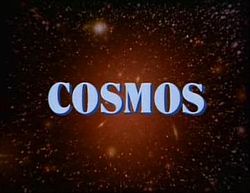
The Shores of the Cosmic Ocean
Cosmos, Episode 1
Carl Sagan opens the program with a description of the cosmos and a “spaceship of the imagination” shaped like a dandelion seed. The ship journeys through the universe’s hundred billion galaxies, the Local Group, the Andromeda galaxy, the Milky Way, the Orion Nebula, our solar system, and finally the planet Earth. Eratosthenes’ successful calculation of the circumference of Earth leads to a description of the ancient Library of Alexandria. Finally, the “Ages of Science” are described, before pulling back to the full span of the cosmic calendar.

One Voice in the Cosmic Fugue
Cosmos, Episode 2
Sagan discusses the story of the Heike crab and artificial selection of crabs resembling samurai warriors, as an opening into a larger discussion of evolution through natural selection (and the pitfalls of intelligent design). Among the topics are the development of life on the Cosmic Calendar and the Cambrian explosion; the function of DNA in growth; genetic replication, repairs, and mutation; the common biochemistry of terrestrial organisms; the creation of the molecules of life in the Miller-Urey experiment; and speculation on alien life (such as life in Jupiter's clouds). In the Cosmos Update ten years later, Sagan remarks on RNA also controlling chemical reactions and reproducing itself and the different roles of comets (potentially carrying organic molecules or causing the Cretaceous–Paleogene extinction event).

Harmony of the Worlds
Cosmos, Episode 3
Beginning with the separation of the fuzzy thinking and pious fraud of astrology from the careful observations of astronomy, Sagan follows the development of astronomical observation. Beginning with constellations and ceremonial calendars (such as those of the Anasazi), the story moves to the debate between Earth and Sun-centered models: Ptolemy and the geocentric worldview, Copernicus' theory, the data-gathering of Tycho Brahe, and the achievements of Johannes Kepler (Kepler's laws of planetary motion and the first science-fiction novel).

The Backbone of Night
Cosmos, Episode 7
Carl Sagan teaches students in a classroom in his childhood home in Brooklyn, New York, which leads into a history of the different mythologies about stars and the gradual revelation of their true nature. In ancient Greece, some philosophers (Aristarchus of Samos, Thales of Miletus, Anaximander, Theodorus of Samos, Empedocles, Democritus) freely pursue scientific knowledge, while others (Plato, Aristotle, and the Pythagoreans) advocate slavery and epistemic secrecy.

Journeys in Space and Time
Cosmos, Episode 8
Ideas about time and space are explored in the changes that constellations undergo over time, the redshift and blue shift measured in interstellar objects, time dilation in Albert Einstein's theory of relativity, the designs of both Leonardo da Vinci and spacecraft that could travel near light speed, time travel and its hypothetical effects on human history, the origins of the Solar System, the history of life, and the immensity of space. In Cosmos Update, the idea of faster-than-light travel by wormholes (researched by Kip Thorne and shown in Sagan’s novel Contact) is discussed.

The Lives of the Stars
Cosmos, Episode 9
The simple act of making an apple pie is extrapolated into the atoms and subatomic particles (electrons, protons, and neutrons) necessary. Many of the ingredients necessary are formed of chemical elements formed in the life and deaths of stars (such as our own Sun), resulting in massive red giants and supernovae or collapsing into white dwarfs, neutron stars, pulsars, and even black holes. These produce all sorts of phenomena, such as radioactivity, cosmic rays, and even the curving of spacetime by gravity. Cosmos Update mentions the supernova SN 1987A and neutrino astronomy.

The Edge of Forever
Cosmos, Episode 10
Beginning with the origins of the universe in the Big Bang, Sagan describes the formation of different types of galaxies and anomalies such as galactic collisions and quasars. The episode moves further into ideas about the structure of the Universe, such as different dimensions (in the imaginary Flatland and four-dimensional hypercubes), an infinite vs. a finite universe, and the idea of an oscillating Universe (similar to that in Hindu cosmology). The search into other ideas such as dark matter and the multiverse is shown, using tools such as the Very Large Array in New Mexico. Cosmos Update shows new information about the odd, irregular surfaces of galaxies and the Milky Way perhaps being a barred spiral galaxy.

Encyclopædia Galactica
Cosmos, Episode 12
Questions are raised about the search for intelligent life beyond the Earth, with UFOs and other close encounters refuted in favor of communications through SETI and radio telescope such as the Arecibo Observatory. The probability of technically advanced civilizations existing elsewhere in the Milky Way is interpreted using the Drake equation and a future hypothetical Encyclopedia Galactica is discussed as a repository of information about other worlds in the galaxy. The Cosmos Update notes that there have been fewer sightings of UFOs and more stories of abductions, while mentioning the META scanning the skies for signals.

Who Speaks for Earth?
Cosmos, Episode 13
Sagan reflects on the future of humanity and the question of "who speaks for Earth?" when meeting extraterrestrials. He discusses the very different meetings of the Tlingit people and explorer Jean-Francois de La Perouse with the destruction of the Aztecs by Spanish conquistadors, the looming threat of nuclear warfare, and the threats shown by destruction of the Library of Alexandria and the murder of Hypatia. The episode ends with an overview of the beginning of the universe, the evolution of life, and the accomplishments of humanity and makes a plea to mankind to cherish life and continue its journey in the cosmos. The Cosmos Update notes the preliminary reconnaissance of planets with spacecraft, the fall of the Berlin Wall and the end of apartheid in South Africa, and measures towards the reduction of nuclear weapons.

Democracy in the Kingdom of Heaven
Does God really rule over humans like a monarch, or might the concept of divinity express itself as a drama through all of us?

Does It Matter?
Essays on Man's Relation to Materiality
Alan Watts explores modern day problems from the outlook of his own philosophy in this collection of essays, inspired mainly by Mahayana Buddhism, Hinduism, and Taoism. Tackling problems of economics, technology, cooking, and clothing, he offers a fresh perspective which is all too foreign to Western society and implores us to get back in touch with the sensuous materiality of the world.

Dynamics of Hyperspace
Abraham and McKenna explore the limitations of traditional maps of consciousness, like those of Freud and Jung, in understanding psychedelic experiences. They propose that psychedelics offer access to a hyperspace beyond the human dimension, requiring new languages and metaphors to map and share these experiences. They discuss the role of consciousness evolution, potential guidance from higher intelligence, and the challenges and opportunities presented by technology and social structures in navigating this uncharted territory.
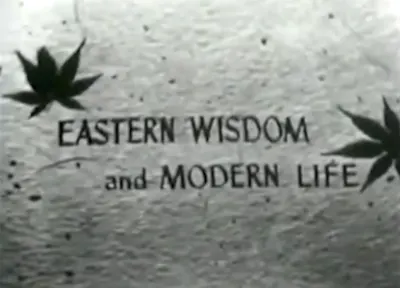
On Death
Eastern Wisdom and Modern Life (Episode 6)
Alan Watts explores Buddhist ideas of the value of death as the great renovator, including the Wheel of Life, and the idea of reincarnation as it is understood by philosophical Buddhists.

Omnipotence
Eastern Wisdom and Modern Life (Episode 13)
Watts explores the contrast between organic and mechanical world views and the difference between the growing process and the making process, and he explains why one corresponds to a democratic principle and the other to a monarchical hierarchy.

The Life of Zen
Eastern Wisdom and Modern Life (Episode 14)
A look inside Zen monastic life and practice reveals a culture of dialog and subtle humor between master and student.

Eros and the Eschaton
What Science Forgot: The Importance of Human Beings
Delivered in Kane Hall at the University of Washington, Terence points out the universe's peculiar tendency to seek out complexity and novelty, and that humanity seems to be the focal point of this process.

Nothingness
Essential Lectures, Program 1
Basing his ideas on sensory perception and physical experience, Alan Watts makes a compelling argument that everything actually depends upon nothing for its very existence.
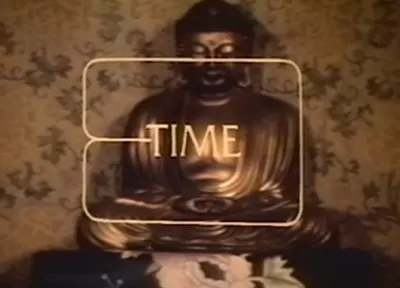
Time
Essential Lectures, Program 6
Here Alan Watts points out that our insistence that the past determines the present is nonsensical.
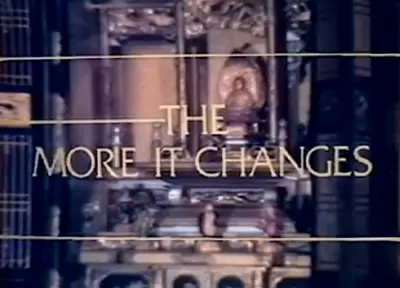
The More It Changes
Essential Lectures, Program 9
Alan Watts speaks on our fascination with reproduction through media, and on the far out notion that human beings may just be one star's way of becoming another star!

Evolution of the Idea of Evolution
Teilhard reveals that evolution has outgrown its origins as a mere biological theory to become the universe’s own heartbeat—a vast, unfolding process shaping matter, mind, and meaning alike. Once we thought ourselves its observers; now we awaken as its apex and instrument, the conscious spearpoint of creation’s long ascent.

Following the Middle Way
Awaken and find peace. Alan illuminates the path out of suffering with Buddhist philosophy as our guide. Through practicing the Noble Eightfold Path of skillful understanding, action, meditation, and concentration, we walk the Middle Way to freedom from clinging and awaken to our interconnected nature.
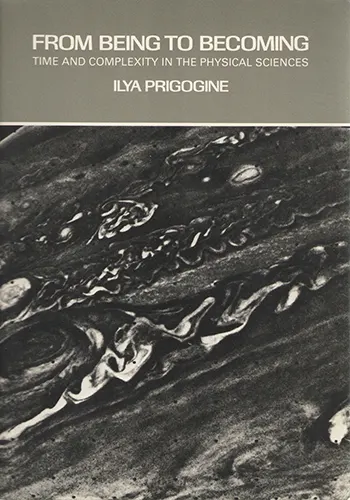
From Being to Becoming
Time and Complexity in the Physical Sciences
How has order emerged from chaos? In this book, intended for the general reader with some background in physical chemistry and thermodynamics, Ilya Prigogine shows how systems far from equilibrium evolve elaborate structures: patterns of circulation in the atmosphere, formation and propagation of chemical waves, the aggregation of single-celled animals. In an effort to understand these phenomena, he explores the philosophical implications of the work for which he received the 1977 Nobel Prize in Chemistry. From Being to Becoming explains how order can develop and offers a new approach to the asymmetry between past and future—the irreversibility of time. Prigogine presents an evolving rather than static world. This imaginative work is sure to arouse controversy and may change the way that the reader sees the laws of science and the world that those laws seek to explain.

Hidden Belief Systems
Alan talks about unexamined assumptions that underlie our commonsense beliefs which may cause confusion in our thinking about nature.

Hot Concepts and Melting Edges
A weekend workshop held at Esalen, with the alternate titles of Deeper and Broader Questions and Eros, Chaos, and Meaning's Edge.
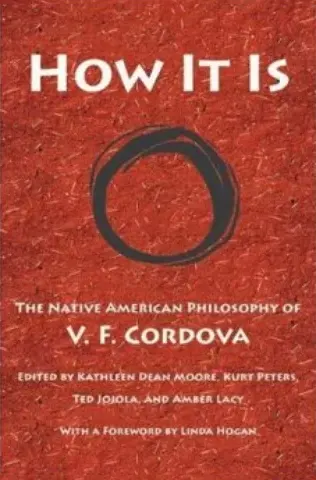
How It Is
The Native American Philosophy of V. F. Cordova
Viola Cordova was the first Native American woman to receive a PhD in philosophy. Even as she became an expert on canonical works of traditional Western philosophy, she devoted herself to defining a Native American philosophy. Although she passed away before she could complete her life’s work, some of her colleagues have organized her pioneering contributions into this provocative book. In three parts, Cordova sets out a complete Native American philosophy. First she explains her own understanding of the nature of reality itself—the origins of the world, the relation of matter and spirit, the nature of time, and the roles of culture and language in understanding all of these. She then turns to our role as residents of the Earth, arguing that we become human as we deepen our relation to our people and to our places, and as we understand the responsibilities that grow from those relationships. In the final section, she calls for a new reverence in a world where there is no distinction between the sacred and the mundane. Cordova clearly contrasts Native American beliefs with the traditions of the Enlightenment and Christianized Europeans (what she calls “Euroman” philosophy). By doing so, she leads her readers into a deeper understanding of both traditions and encourages us to question any view that claims a singular truth. From these essays—which are lucid, insightful, frequently funny, and occasionally angry—we receive a powerful new vision of how we can live with respect, reciprocity, and joy.

Image of Man
Watts presents two world myths—existence as artifact versus performance—and shines light on their gifts. A fascinating talk on embracing all roles in life's epic adventure.

Imagination in the Light of Nature
Terence claims that “the boundless creativity of the human mind will be tapped into and come to our aid.” His bold statement is followed by an inspirational pep-talk about how miraculous the appearance of consciuosness in this universe is, and what a valuable potential humans represent in future cosmic evolution.
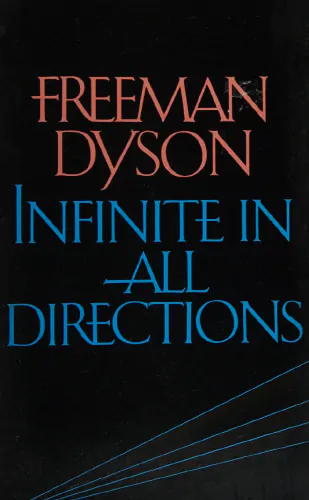
Infinite in All Directions
Infinite in All Directions explores science and religion as two complementary ways of understanding the universe. Based on Freenman Dyson's Gifford Lectures, the book celebrates diversity, both in the natural world and human responses to it. Dyson contrasts different scientific approaches using Manchester and Athens as symbols. He delves into the origin and evolution of life, highlighting how life thrives on diversity. In the final chapter, Dyson speculates on the future of life and the universe, blending science with a touch of science fiction and theology.
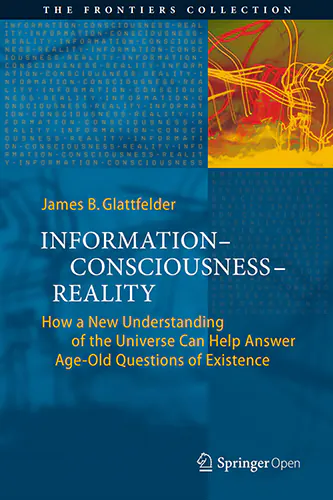
Information — Consciousness — Reality
How a New Understanding of the Universe Can Help Answer Age-Old Questions of Existence
This open access book chronicles the rise of a new scientific paradigm offering novel insights into the age-old enigmas of existence. Over 300 years ago, the human mind discovered the machine code of reality: mathematics. By utilizing abstract thought systems, humans began to decode the workings of the cosmos. From this understanding, the current scientific paradigm emerged, ultimately discovering the gift of technology. Today, however, our island of knowledge is surrounded by ever longer shores of ignorance. Science appears to have hit a dead end when confronted with the nature of reality and consciousness. In this fascinating and accessible volume, James Glattfelder explores a radical paradigm shift uncovering the ontology of reality. It is found to be information-theoretic and participatory, yielding a computational and programmable universe.

Is the Emergence of Life an Expected Phase Transition in the Evolving Universe?
This article proposes a new definition of life as chemical systems that achieve catalytic closure, constraint closure, and spatial closure. It argues that the emergence of such living systems is an expected phase transition in the evolving universe. However, the ever-creative evolution of life thereafter cannot be explained by physics alone, showing the limits of reductionism. Life is a double miracle—expected yet unexplainable.

Journey to India
Buddhism sees life as drama—the Self playing hide and seek, getting lost for fun. It strips Hinduism for export, pursuing enlightenment not through beliefs but direct experience of who you really are beyond the separate ego. Through dialectic questioning, it demolishes all concepts you cling to, shaking your foundations until you let go into a state of insecurity that amazingly equals freedom. The teacher seems perfectly sane having nothing to hold onto, inspiring you to be alright that way too.

Levels of Magnification
Philosophy: East and West, Program 26
We’re living under the shadow of potential catastrophe—atomic testing, global tension, and existential dread—yet many seem hypnotized into indifferent routine. Our personal struggles mirror a cosmic dance: just as the birth and death of cells form a healthy body, our conflicts may contribute to a larger, mysterious harmony. Embracing uncertainty with a broader sense of identity, rather than succumbing to panic or despair, might just be the secret to living wisely in this unpredictable, yet oddly charming, cosmic experiment.
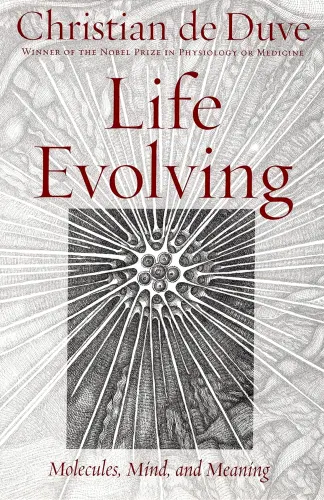
Life Evolving
Molecules, Mind, and Meaning
Christian de Duve, a Nobel Prize-winning biologist, takes readers on a journey through the biological world, from the tiniest cells to the future of life. He argues that life was bound to arise and discusses the evolution of humans, consciousness, language, science, emotion, morality, altruism, and love. De Duve concludes by speculating on humanity's future, including the possibility of evolving into a new species, and shares his thoughts on God and immortality. This wise and humane book sums up his learnings about life and our place in the universe.

Life and the Planets
Pierre Teilhard de Chardin explores the concept of complexification in the universe, focusing on the ever-increasing combination of smaller elements into larger structures, and then extrapolates this behavior to humanity's current situation. What if the human species is an intermediary evolutionary stage, and what would the next rung on the ladder look like? Teilhard suggests that it will involve the merging-together of all humanity into a divine, planetized consciousness.

Linear Societies and Nonlinear Drugs
Speaking on the first day of the 1999 Palenque Entheobotany Conference at the Chan Kha Hotel, Terence McKenna probes the mind-blowing philosophical revelations of psychedelics. He contends these consciousness-expanding substances can shatter Western rationality, unveiling mystical realities beyond mainstream paradigms. Psychedelics may hold the key to reimagining society's connection with nature and technology. McKenna passionately argues these drugs can catalyze new ways of thinking, fueling an intellectual revolution to change the world.

Man's Place in the Universe
Reflexions on Complexity
In this unusually personal essay, Teilhard speaks almost across the table, inviting us to rethink our cosmic standing. He shows how humanity, once dwarfed by vast space and tiny particles, regains significance through a third dimension of reality: complexity. As matter organizes itself into ever-deeper centers, consciousness rises—and in us, becomes self-aware. Humanity is not a cosmic accident, he suggests, but the universe awakening to itself and preparing its next leap.

Megatripolis Opening Night
Terence McKenna discusses the discovery of a new legal psychedelic compound from the salvia divinorum plant. He argues that humanity is on the brink of a cultural transformation driven by the accelerating production of novelty in the universe, enabled by psychedelics and technology. He envisions a transcendental future where boundaries dissolve and consciousness evolves.
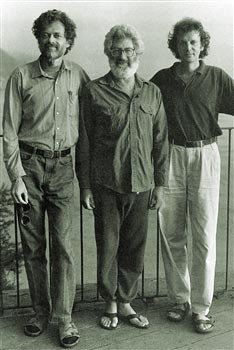
Metamorphosis
Join McKenna, Sheldrake, and Abraham on an imaginative journey into nature's creativity. Surfing the chaotic waters of psychedelic states, they catch glimpses of the Gaian mind behind Earth's being. Here, in imaginal realms beyond rationale, novelty is born. By relinquishing egoic control and surrendering to an unknowable creative force, we tap into the divine imagination—the eternal wellspring of nature's endless becomings. Immersing ourselves in this flow, we reunite with the cosmic creative essence.
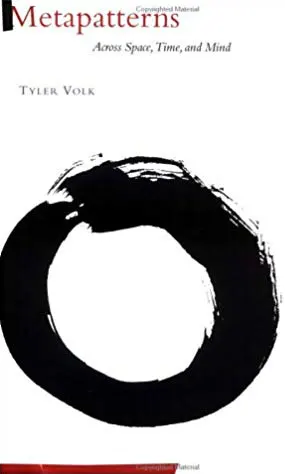
Metapatterns
Across Space, Time, and Mind
In the interdisciplinary tradition of Buckminster Fuller’s work, Gregory Bateson’s Mind and Nature, and Fritjof Capra’s Tao of Physics, Metapatterns embraces both nature and culture, seeking out the grand-scale patterns that help explain the functioning of our universe. Metapatterns begins with the archetypal patterns of space, both form-building and relational. Tyler Volk then turns to the arrows, breaks, and cycles that infuse the workings of time. With artful dexterity, he brings together many layers of comprehension, drawing on an astounding range of material from art, architecture, philosophy, mythology, biology, geometry, and the atmospheric and oceanographic sciences. Richly illustrating his metapatterns with a series of sophisticated collages prepared for this book, Volk offers an exciting new look at science and the imagination. As playful and intuitive as it is logical and explanatory, Metapatterns offers an enlightening view of the functional, universal form in space, processes in time, and concepts in mind.

Metaphysics of Psychedelics
Terence McKenna delves into the enigmatic realm of ayahuasca, unveiling its technological complexity and potential to unlock hidden dimensions of consciousness. His captivating discourse explores the interplay of mind, matter, and the imagination, hinting at the possibility of accessing realms beyond our ordinary perception.
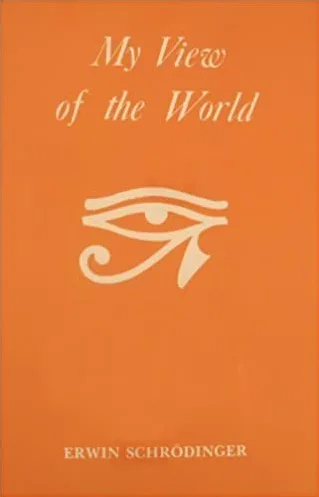
My View of the World
A Nobel prize winner, a great man and a great scientist, Erwin Schrödinger has made his mark in physics, but his eye scans a far wider horizon: here are two stimulating and discursive essays which summarize his philosophical views on the nature of the world. Schrödinger's world view, derived from the Indian writings of the Vedanta, is that there is only a single consciousness of which we are all different aspects. He admits that this view is mystical and metaphysical and incapable of logical deduction. But he also insists that this is true of the belief in an external world capable of influencing the mind and of being influenced by it. Schrödinger's world view leads naturally to a philosophy of reverence for life.
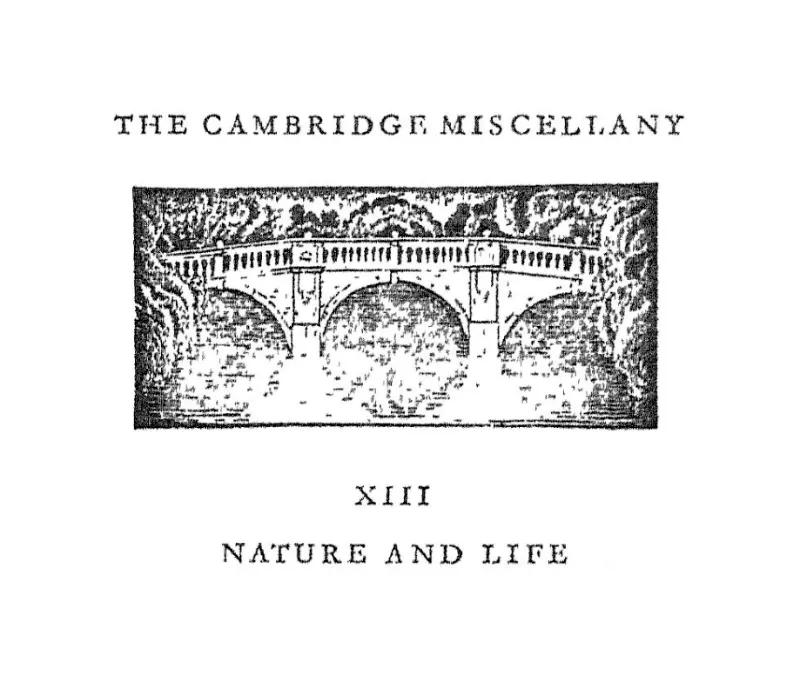
Nature and Life
Two lectures delivered by Alfred North Whitehead at the University of Chicago on the complex relationship between nature, philosophy and science.

Nature is the Center of the Mandala
Presented at the Shared Visions bookstore, Terence talks about humanity's path towards greater consciousness, and attempts to take a glance at what comes after the Omega Point.

Note on the Biological Structure of Mankind
Humanity isn’t raw clay, but a living, evolving organism shaped by deep cosmic laws. As consciousness and complexity entwine, the human mass tightens, organizes, and spiritualizes itself. Diversity must be honored, unity embraced. Any blueprint for the future that ignores these biological forces is doomed from the start.

On Looking at a Cyclotron
Reflections on the Folding-Back upon Itself of Human Energy
Visiting Berkeley’s cyclotrons, Teilhard de Chardin sees more than machines—he perceives symbols of humanity’s own acceleration. Our vast networks of research, energy, and invention, converging like particles in a magnetic field, are drawing humankind into a single reflective consciousness—an evolutionary spiral toward the ultra-human, where science and spirit finally unite.

Opening the Doors of Creativity
This far-out lecture held at the Carnegie Art Museum riffs on art, shamanism, psychedelics, and saving the planet. Terence sees artists as modern shamans who can reconnect us to the Gaian mind. He thinks we're an infant species held in nature's arms, but we've got to get our act together fast and let the irrational muse guide us, or we'll trash the place. Heavy stuff, but optimistically visionary.

Outline of a Dialectic of Spirit
Teilhard de Chardin explores how human understanding evolves through a dynamic interplay between the known and the unknown, like a spark leaping back and forth. He argues that the universe is driven by a rising complexity and consciousness, culminating in humanity. This progression points toward an ultimate convergence, or “Omega Point,” which he identifies with a transcendent God. Teilhard connects this cosmic evolution to Christianity, suggesting that Christ embodies this divine culmination, uniting the material and spiritual realms in a harmonious, evolving whole.

Parallel Thinking
Philosophy: East and West, Program 19
What a tickling trickster the universe is! As Watts wanders down philosophical byways, tales emerge of those healed by harmonizing body and world. Yet we teach children to twist themselves to fit odd ideals. Tension tunnels through society, our “civilizing” ways quite uncouth! Might we reconsider, relax our willful ways? Observantly ambling amidst being's little blooms, we rediscover unity in the unruly diversity—finding wisdom whispering within, inviting us to dance delightfully with life’s flowing forms.

Physics of Life, Time, Complexity, and Aliens
Sara Walker and Lex Fridman explore life’s grand mysteries, touching on the nature of existence and the origins of life to the potential of artificial intelligence and the future of consciousness. Walker’s unique perspective challenges conventional wisdom, inviting us to reconsider our place in the cosmic dance.

Play and Survival
Life's a game where we forget we're the cosmic nerve-endings of an eternal now. So stop furrowing your brow—there's divine frivolity in the endless, meaningless music of being. Drop your masks and dance lightly as angels, for you are the Joker in the pack. It's all a joke, and the joke's on you!

Power of Space
Weaving connections between Eastern thought and modern science, Alan Watts explores the wonder of space. For him, space is no mere emptiness but a cosmic tapestry integral to existence. He draws parallels between space and the Buddhist void, seeing both as the interwoven ground of being that allows consciousness to emerge.
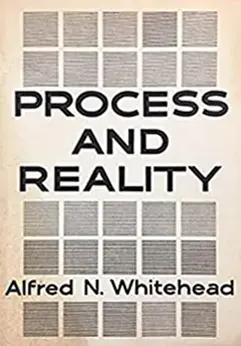
Process and Reality
An Essay in Cosmology
One of the major philosophical texts of the twentieth century, Process and Reality is based on Alfred North Whitehead’s influential lectures that he delivered at the University of Edinburgh in the 1920s. In it, he propounds a philosophy of organism (or process philosophy), in which the various elements of reality are brought into a consistent relation to each other. It is also an exploration of some of the preeminent thinkers of the seventeenth and eighteenth centuries, such as Descartes, Newton, Locke, and Kant.

Progress Through Fear
A talk on the impact of science and technology on man's role in the natural world.

Rap Dancing into the Third Millennium
(Packing For The Long Strange Trip)
Terence’s second workshop at Starwood Festival XIV. The approaching new millenium, its perils, and its promise will be the theme of this intimate workshop. We will analyze and review the past thousand years with an eye to trends and opportunities that the future may bring. Western civilization is caught in a phase transition to the first planet-wide, species-wide civilization. Does the emergence of a shared set of universal values—democracy, free markets, and the dignity of the individual—have to mean the end of diversity and pluarlism? What does human self-imaging through technology portend to each of us? Is the human race down for the count, or on the brink of its greatest adventure? Psychedelics, virtual reality, and the transformative power of magic and language will be topics for discussion.

Reflections on the Scientific Probability and the Religious Consequences of an Ultra-Human
Evolution as a cosmic drama: matter rising through life into reflective humanity, converging toward a planetary mind. Teilhard says this “ultra-human” destiny fuses science and spirit, where God is not above but ahead—emerging as love at the core of creation, and igniting the world into a conscious fire.

Return to the Forest
Philosophy: East and West, Program 5
Watts explores Joseph Campbell’s insights on spiritual evolution through different cultural phases. As societies moved from hunting to farming, religion shifted from shamanic individual experiences to structured, communal worldviews. When these social frameworks crumble—as in our modern era—we’re cast back into the forest of self-discovery. The wise seeker must abandon societal maps and wander alone into direct experience, finding what countless mystics have found: that true liberation comes not through authority, but through firsthand encounter with reality itself.

Seeking the Stone
What if psychedelic plants sparked humanity’s awakening? McKenna (speaking at the 1991 Whole Life Expo) contends these mind-altering substances dissolved the egos of early humans, bonded communities, and revealed cosmic consciousness, catalyzing rapid cultural progress. He asserts modern society suffers from severing this link to nature and spirit, and calls us to reclaim this “archaic revival” before consumerism leads civilization over the brink.

Sense of Nonsense
In this public radio broadcast, Alan explores the origin of the desire for meaningfulness. In the search for satisfaction, what is it that is really sought for or yearned after? The talk turns from academic discussion into poetry. What is the meaning of significance?

Shamanism, Alchemy, and the Millennium
A whimsical reflection on humanity's journey toward ever-greater connectedness, from the cosmic singularity to the noosphere's fanciful manifestations. Could the shamanic alchemist's mythic intuition, the goddess's wisdom, and capitalism's impatient urge together guide us to the stars and back to Eden? An optimistic revelry.

Some Reflexions on the Conversion of the World
Humanity has discovered infinite space, endless time, and unstoppable evolution—a new faith in progress. Teilhard says: don’t fight it, fuse it. Christianity must reveal Christ as the universe’s living center, not a brake on growth but its ultimate flame. Only then can heaven and earth unite, and the fire of faith spread like evolution itself.

Speaking Metaphorically
Terence McKenna explores how psychedelics can alter language and consciousness, unlocking a transformative phenomenon at the heart of human evolution. He envisions a shift towards a visible, gestalt-like language of meaning that will profoundly reshape culture, enabling our species to transcend earthly confines and venture into the cosmos. Proposing psychedelics as a pheromonal regulator for collective consciousness, McKenna suggests this archaic linguistic revolution holds the keys to our future, bridging the gap between nature and technology in ways that could determine the very destiny of humanity.

State of the Stone
In this talk, McKenna gives one of his more hopeful presentations about love and the state of humanity at the end of the millenium.

Super-Humanity, Super-Christ, Super-Charity
Some New Dimensions for the Future
Humanity, Teilhard argues, is awakening in an evolutionary storm—one pulling us toward a larger, more unified “Super-Humanity.” In this widening scale of mind and world, Christ emerges not as a distant memory but as the universe’s glowing center, the Omega drawing all things together. From this cosmic magnetism arises a “Super-Charity”: love powerful enough to drive evolution itself.
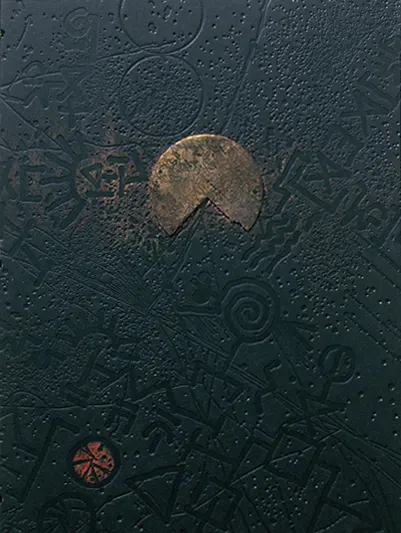
Synesthesia
Terence visited Granary Books’ exhibition of books and prints by Timothy C. Ely in July 1991, and his empathetic and eloquent understanding of Ely’s work inspired a collaboration. Philip Gallo typographically interpreted McKenna’s text, which was printed letterpress on Rives BFK. The text appears on, around, and between Ely’s original painted and drawn images, which Ely describes as “articulated glossolalia refracted from the writing.” Only 75 copies were printed.
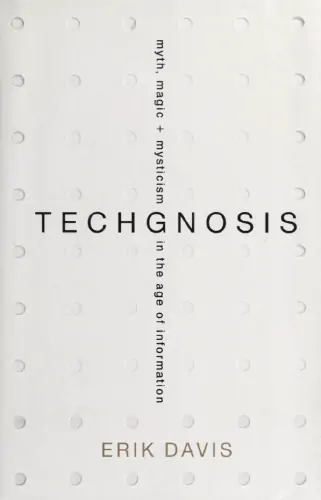
TechGnosis
Myth, Magic, and Mysticism in the Age of Information
How does our fascination with technology intersect with the religious imagination? While the realms of the digital and the spiritual may seem worlds apart, esoteric and religious impulses have in fact always permeated (and sometimes inspired) technological communication. Erik Davis uncovers startling connections between such seemingly disparate topics as electricity and alchemy; online role-playing games and religious and occult practices; virtual reality and gnostic mythology; programming languages and Kabbalah. The final chapters address the apocalyptic dreams that haunt technology, providing vital historical context as well as new ways to think about a future defined by the mutant intermingling of mind and machine, nightmare and fantasy.

Technology and the Human Environment
Perhaps no futurist has been more energetic, more vocal, more popular, or more optimistic than a seventy-six-year-old engineer-visionary, poet-philosopher named R. Buckminster Fuller. Fuller’s planetary perspective has won him zealous converts the world over. Even those who disagree with his technological transcendentalism share unbegrudged admiration for the world’s youngest old futurist.

The Activation of Human Energy
Teilhard sees human energy not as brute force but as consciousness folding back on itself, organizing matter into ever greater complexity. Our survival rests less on fuel than on vision and will. This energy converges toward a final peak—an irreversible surge of awareness—suggesting that spirit, not physics, is the true engine of the cosmos.

The Analysis of Life
Life's essence transcends scientific scrutiny. Though such examination reduces life to physical mechanisms, synthesis reveals the boundless consciousness and freedom underlying all existence. As Teilhard de Chardin contemplated, life organizes chance through each being's innate creativity. From this vision, we can glimpse life's mystical emergence.
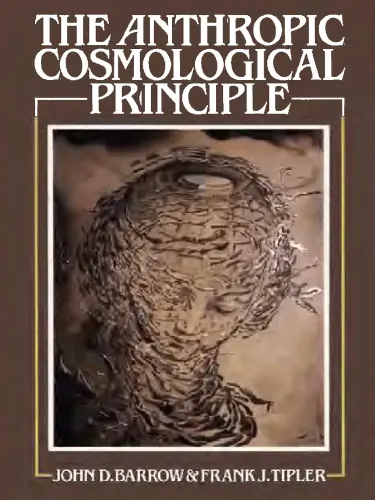
The Anthropic Cosmological Principle
Since Copernicus, science has moved humanity from the center of Creation. However, The Anthropic Cosmological Principle suggests that intelligent observers determine the Universe’s structure. Its radical form asserts that intelligent life must emerge and never die out. Cosmologists John Barrow and Frank Tipler explore the Principle’s implications, from the definition of life to quantum theory. Covering fields like philosophy and astrophysics, this work connects the existence of life with the vast cosmos, engaging a broad audience.
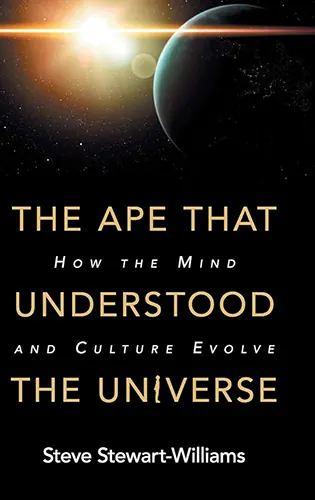
The Ape that Understood the Universe
How the Mind and Culture Evolve
The Ape that Understood the Universe is the story of the strangest animal in the world: the human animal. It opens with a question: How would an alien scientist view our species? What would it make of our sex differences, our sexual behavior, our child-rearing patterns, our moral codes, our religions, our languages, and science? The book tackles these issues by drawing on ideas from two major schools of thought: evolutionary psychology and cultural evolutionary theory. The guiding assumption is that humans are animals, and that like all animals, we evolved to pass on our genes. At some point, however, we also evolved the capacity for culture—and from that moment, culture began evolving in its own right. This transformed us from a mere ape into an ape capable of reshaping the planet, travelling to other worlds, and understanding the vast universe of which we're but a tiny, fleeting fragment.
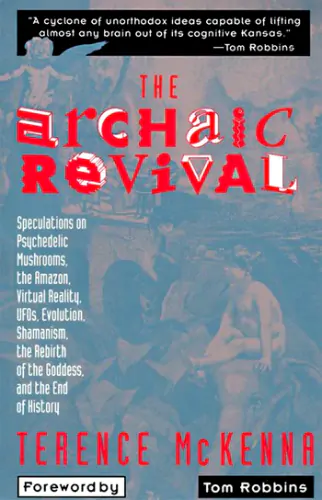
The Archaic Revival
Speculations on Psychedelic Mushrooms, the Amazon, Virtual Reality, UFOs, Evolution, Shamanism, the Rebirth of the Goddess, and the End of History
In these essays, interviews, and narrative adventures, McKenna takes us on a mesmerizing journey deep into the Amazon as well as into the hidden recesses of the human psyche and the outer limits of our culture, giving us startling visions of the past and future.
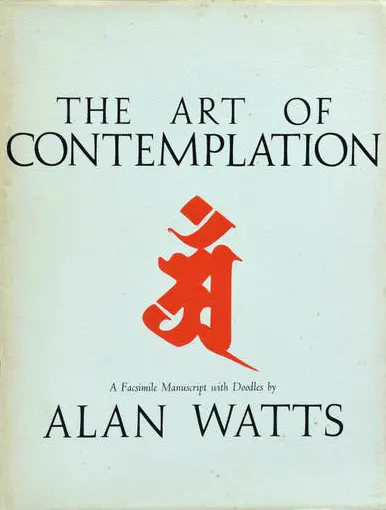
The Art of Contemplation
A manuscript with original doodles, handwritten by Alan Watts. It explores contemplation as awareness of the present moment without judgment. Watts advocates accepting what is happening now rather than trying to transform the mind. He sees contemplation as aligning with the flow of nature. Published as a limited edition by the Society of Comparative Philosophy.
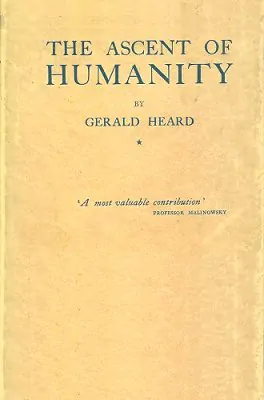
The Ascent of Humanity
An Essay on the Evolution of Civilization from Group Consciousness Through Individuality to Super-consciousness
Gerald Heard presents a novel view of history and civilization as the evolution of human consciousness, moving from collective group awareness to individual self-consciousness and beyond. Heard argues that primitive humans were deeply connected to their communities and less aware of individuality, while modern humans are highly self-conscious but separated from their unconscious minds and one another. He suggests that further progress requires advancing towards "superconsciousness," where individuals bridge these divides.
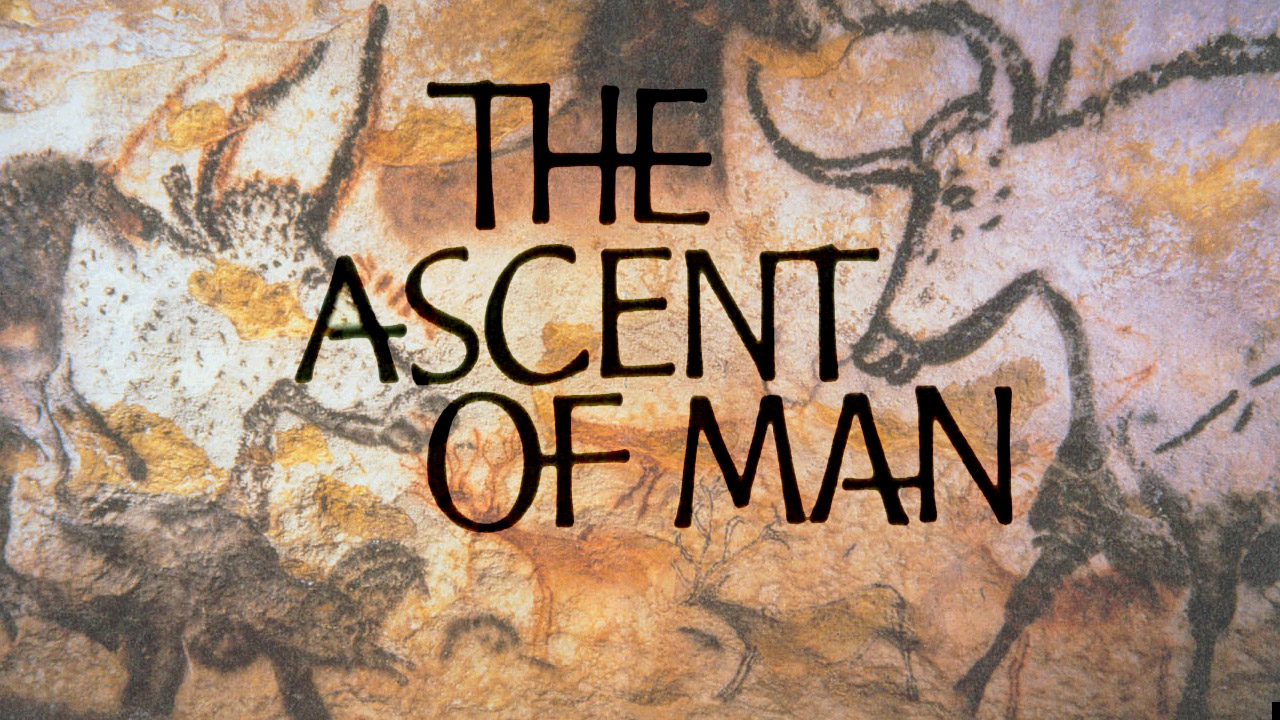
World Within World
The Ascent Of Man, Episode 10
In the vaults of ancient Polish salt mines Bronowski embarks on a journey to the hidden world inside the atom. He traces the history of the men and the ideas that made twentieth-century physics the greatest achievement of the human imagination.

The Birth of a New Humanity
Terence McKenna explored themes of accelerating complexity, impending radical shifts in human reality, and the continuity between our changing relationship with Earth and a new cosmic modality transcending our fragile ecosystem. He posited history as a self-limiting 25,000-year process reaching its climax, suggesting individual acts of “midwifery” can ease this epochal transition. He also cautioned about combining psychoactive compounds without proper expertise.

The Christic
The universe is evolving toward a profound unity where science and spirituality merge, Teilhard says. He envisions human consciousness and the cosmos intertwined, sparking a transformative energy that unites all life in a new, dynamic spirituality—an awakening that promises to ignite our collective future.

The Constitution of Nature
Philosophy: East and West, Program 28
Watts unfurls three cosmic tapestries woven by ancient minds: the Western world's vision of nature stitched as a crafted cloth, India's playful drama where God dances every part, and China's Taoist masterwork of nature flowing free like mountain streams. Though the West's thread gave rise to technological gifts, it tangled our hearts. Now the Orient's ancient organic insight whispers fresh hope, kindling new fires of wisdom within.

The Directions and Conditions of the Future
Teilhard de Chardin envisions human evolution as a purposeful journey guided by three intertwined trends: a natural push toward global unity, technological advances that expand our capabilities, and a deepening of reflective consciousness. Yet, he warns that without a genuine inner cohesion—rooted in love and mutual understanding—these forces may lead to a cold, mechanized future. In his view, our destiny is not random but a guided ascent toward a higher, more meaningful collective awareness.
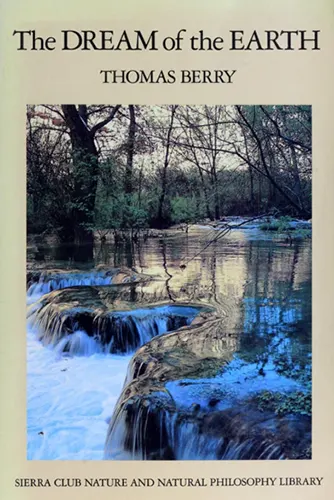
The Dream of the Earth
Noted cultural historian Thomas Berry provides nothing less than a new intellectual-ethical framework for the human community by positing planetary well-being as the measure of all human activity. Drawing on the wisdom of Western philosophy, Asian thought, and Native American traditions, as well as contemporary physics and evolutionary biology, Berry offers a new perspective that recasts our understanding of science, technology, politics, religion, ecology, and education. He shows us why it is important for us to respond to the Earth’s need for planetary renewal, and what we must do to break free of the “technological trance” that drives a misguided dream of progress. Only then, he suggests, can we foster mutually enhancing human-Earth relationships that can heal our traumatized global biosystem.

The End of the World
Teilhard explores a cosmic vision of humanity's future, envisioning a collective consciousness facing a final choice about God. He describes the end of the world not as a disaster, but as a spiritual transformation, and imagines a dramatic unification of all beings with the divine, culminating in a mystical fusion of God and the universe.

The Energy of Evolution
Teilhard de Chardin sees evolution not as blind biology but as energy awakening to thought. Humanity inaugurates a new phase: self-directed, convergent, planetary, driven less by survival than by the magnetism of the future. Evolution’s true axis is consciousness itself, pulled toward an ultimate point of unity where being and becoming fuse.

The Evolution of Responsibility in the World
Teilhard argues that responsibility isn’t just a social rule but a cosmic imperative. The universe, he claims, is hurtling toward unity—collapsing matter into life, life into consciousness. Today, planetary compression—population growth, tech, and globalization—fuels interdependence. Each choice ripples across humanity: a pilot’s error, a scientist’s discovery, a leader’s word. This isn’t mere ethics; it’s evolution’s demand. As humanity merges into a thinking superorganism, responsibility becomes biological—a binding thread in Earth’s living tapestry, transcending laws to reflect our shared cosmic destiny.

The Grand Option
Teilhard explores the choices facing humanity as it undergoes the process of socialization, and examines four paths: pessimism, optimism with withdrawal, individualistic pluralism, and convergent unity. He argues for the path of convergent unity, where socialization leads not to loss of individuality but to differentiation and personalization within a unifying whole, fulfilling humanity’s evolutionary trajectory toward higher consciousness.

The Joyous Cosmology
What kind of a theory of the universe would it take for us to willingly accept the pain, turmoil, chaos, heartbreak, and suffering that comes with the state of being a consciously aware and individuated Self?

The Nature of Things
David Bohm discusses his perspective on theoretical physics and quantum mechanics, including the contradictions between relativity and quantum theory. He explains his theory of the implicate and explicate order to describe the wholeness and interconnectedness of matter. Bohm relates this to consciousness, self-deception in thought, and Krishnamurti's teachings on awareness to transform individual and collective conditioning.
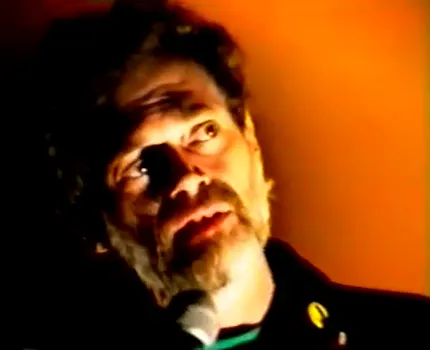
The New Psychedelics
Held at the Ego-Soft event, Terence presented his philosophy and eschatology rap in accompaniment with a rhythmic didgeridoo and bell performance.

The Old and the New Vision
Herbert Günther reveals how ancient Tibetan Buddhist texts offer insights into consciousness that parallel modern scientific discoveries. The Tibetans viewed humans not as isolated beings, but as expressions of universal intelligence, describing three levels: the physical body, an experiential “phantom-like” body, and a mysterious deep structure. Their texts suggest that the universe itself is conducting a grand experiment through human consciousness—playfully creating new possibilities and evolving toward higher forms of order.

The Omega Point as Eschaton
Answers to Pannenberg's Questions for Scientists
Frank Tipler presents an outline of the Omega Point theory, which is a model for an omnipresent, omniscient, omnipotent, evolving, personal God who is both transcendent to spacetime and immanent in it, and who exists necessarily. The model is a falsifiable physical theory, deriving its key concepts not from any religious tradition but from modern physical cosmology and computer science; from scientific materialism rather than revelation. Four testable predictions of the model are given. The theory assumes that thinking is a purely physical process of the brain, and that personality dies with the brain. Nevertheless, he shows that the Omega Point theory suggests a future universal resurrection of the dead very similar to the one predicted in the Judeo-Christian-Islamic tradition. The notions of “grace” and the “beatific vision” appear naturally in the model.
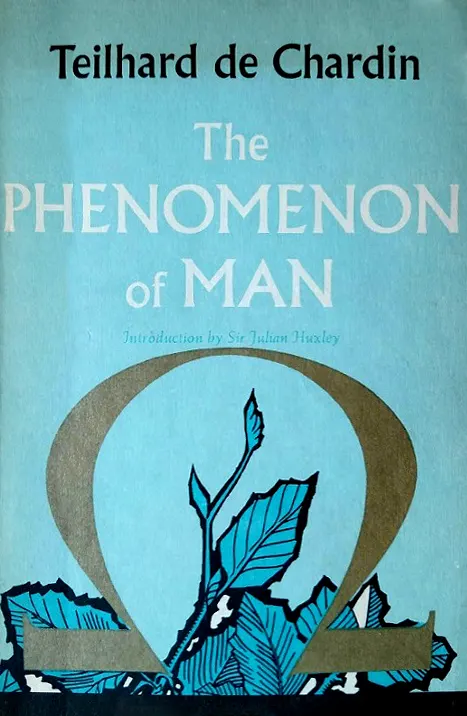
The Phenomenon of Man
Visionary theologian and evolutionary theorist Pierre Teilhard de Chardin applied his whole life, his tremendous intellect, and his great spiritual faith to building a philosophy that would reconcile religion with the scientific theory of evolution. In this timeless book (whose original French title better translates to “The Human Phenomenon”), Teilhard argues that just as living organisms sprung from inorganic matter and evolved into ever more complex thinking beings, humans are evolving toward an “omega point”—defined by Teilhard as a convergence with the Divine.

The Phyletic Structure of the Human Group
Teilhard de Chardin explores the arc of human evolution, tracing humankind's progression from primordial divergence to modern convergence. He argues that we now stand at an equator where further global compression will compel our species to attain unimaginable new heights of consciousness. An eloquent exploration of our place in the cosmos and destiny as thinking beings.

The Plot Thickens, the Stakes Rise
McKenna discussed his theory that humanity is accelerating towards a transcendental object at the end of time, propelled by ever-increasing novelty. He argued that the internet and new technologies like virtual reality are expanding consciousness in this trajectory. McKenna was especially excited about the legal psychedelic salvia divinorum, urging people to explore it and other plants as allies toward reaching higher states of awareness before the culmination of cosmic evolution.

The Position of Man in Nature and the Significance of Human Socialization
Is there in the universe a main axis of evolution? Pierre Teilhard de Chardin argues for the centrality and progressive direction of life, human thought, and social bonds in cosmic unfolding. His four propositions lead to the bold claim that Christianity drives humanity's spiritual ascent, culminating in a transcendent fulfillment.
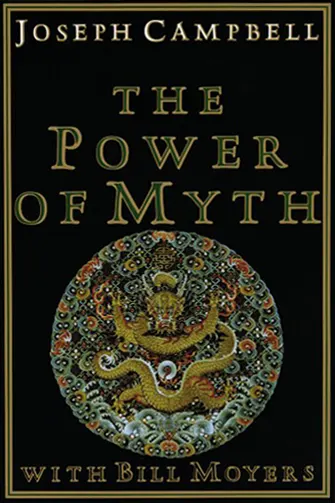
The Message of the Myth
The Power of Myth, Part 2
Bill Moyers and mythologist Joseph Campbell compare creation myths from the Bible and elsewhere, and talk about how religions and mythologies need to change with time in order to maintain their relevance in peoples’ lives.

Masks of Eternity
The Power of Myth, Part 6
Bill Moyers and mythologist Joseph Campbell discuss commonalities in every culture that create a need for God, and the symbolism of circles in life and literature.

The Psychological Conditions of the Unification of Man
Teilhard discusses the objective and subjective conditions necessary for humankind to maintain its passion for unification and progress. Objectively, the universe must be perceived as open and centered towards the future. Subjectively, humanity must develop a heightened sense of the irreversible, the cosmic, and a faith that serves as a driving force for the world's advancement, which he suggests can be found in a properly understood Christianity.
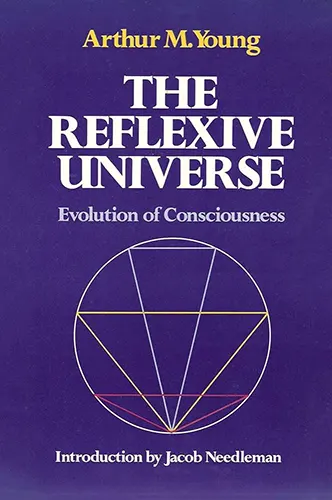
The Reflexive Universe
Evolution of Consciousness
Integrating the findings of modern science with ancient wisdom, this seminal work offers a paradigm for resolving the schism between spirit and matter. Arthur Young’s Theory of Process provides a model for the evolution of consciousness out of light (the quantum of action), offering hope for an age in search of value and meaning.
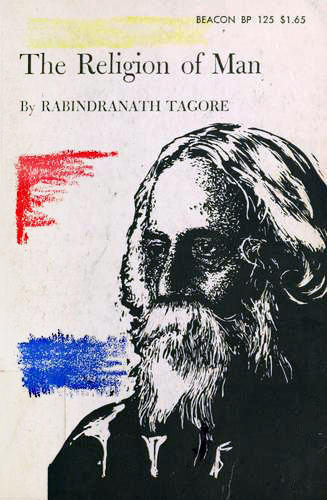
The Religion of Man
The Religion of Man is a compilation of lectures by Rabindranath Tagore, edited by him and drawn largely from his Hibbert Lectures given at Oxford University. A Brahmo playwright and poet of global renown, Tagore deals with the universal themes of God, divine experience, illumination, and spirituality.

The Rites of Spring
Terence McKenna theorizes that ingestion of psilocybin mushrooms catalyzed the emergence of human self-reflection. He argues that psilocybin enhanced visual acuity and symbol processing in early hominids, leading to the development of human consciousness. Psychedelic plants can accelerate cultural change by deconditioning rigid mindsets, according to McKenna. He envisions a future where machines have consciousness and visible language communicates meaning directly. Ultimately, McKenna foresees the impending transformation of humanity through imagination and connection with the mysterious Other.
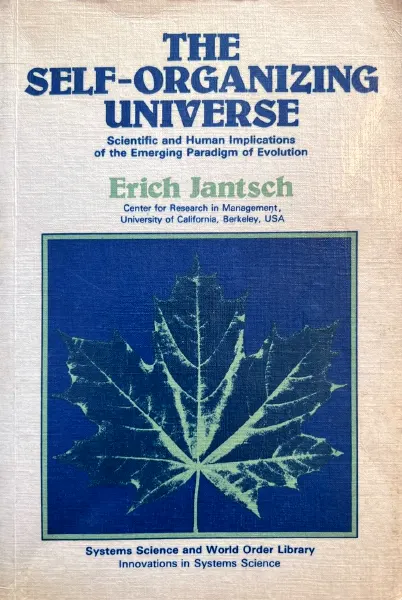
The Self-Organizing Universe
Scientific and Human Implications of the Emerging Paradigm of Evolution
The evolution of the universe—ranging from cosmic and biological to sociocultural evolution—is viewed in terms of the unifying paradigm of self-organization. The contours of this paradigm emerge from the synthesis of a number of important concepts, and provide a scientific foundation to a new world-view which emphasizes process over structure, nonequilibrium over equilibrium, evolution over permanency, and individual creativity over collective stabilization. The book, with its emphasis on the interaction of microstructures with the entire biosphere, ecosystems etc., and on how micro- and macrocosmos mutually create the conditions for their further evolution, provides a comprehensive framework for a deeper understanding of human creativity in a time of transition.

The Sense of Man
Humanity is not a scatter of individuals, but the birth of a single mind—the noosphere. Just as life once ignited from matter, thought now ignites from life. Teilhard says our task is no longer survival alone, but conscious evolution to forge a unified destiny where the universe awakens to itself through us.

The Sound of Rain
A personal journey to Japan reveals that the heart of Zen is not a complex philosophy, but a direct experience of reality. Alan finds that, like the sound of rain, the universe needs no translation. True understanding arises from perceiving life as it is—a unified whole where everything from blooming flowers to our own consciousness is part of a single, magnificent happening.

The Spirit of the Earth
Teilhard depicts humanity as the Earth awakening to itself, evolution rising toward ever-greater unity. Love and consciousness converge into a planetary spirit, but this ascent, he insists, cannot endure without religion—our innate need for an absolute that calls us forward. In the universe’s unfolding, God emerges as evolution’s necessary summit and sustaining fire.

The Stuff of the Universe
Gazing upon the island of Saint Helena during his voyage from New York City to the Cape Peninsula, Teilhard de Chardin articulates his vision of human evolution culminating in cosmic unity with the Christ—the ultimate center of consciousness and complexity in the universe.

The Syntax of Psychedelic Time
Terence McKenna weaves a tapestry of ideas exploring fractal time, the psychedelic mushroom's potent voice, and humanity's impending transcendence into a galactic, post-biological singularity. Brace yourself for a journey through the uncharted realms of novelty and consciousness expansion.

The Universe Enlightened
Harding argues that awakening isn’t private but cosmic: to truly know yourself is to rediscover a living, intelligent universe. Modern science, he claims, quietly supports this ancient vision. When the illusion of a separate self dissolves, the universe itself wakes up as home, alive and coherent.

The Universe in Consciousness
Imagine a world where everything is connected by a single mind: Bernardo Kastrup argues that reality is fundamentally mental, not physical. He suggests that what we perceive as individual consciousness is actually fragments of a universal consciousness. Kastrup challenges the mainstream view of materialism, proposing instead that the mind is the primary substance of the universe. By integrating concepts from psychology, neuroscience, and philosophy, he presents a compelling case for a mental universe, urging us to rethink our understanding of reality.
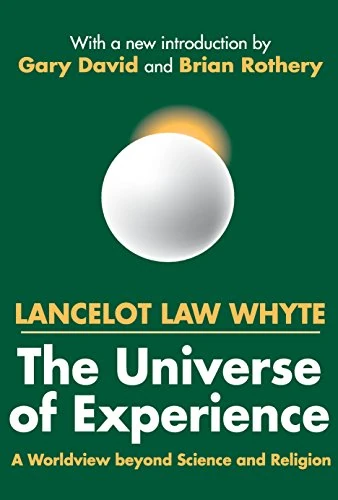
The Universe of Experience
A Worldview Beyond Science and Religion
Modern experience forces philosophy and social thought to confront the basic problems of value. Is this life worth caring about? How can we find a way between the deceit of fanatical belief and despair? In the view of Lancelot Law Whyte, the essential challenge to mankind today is an underlying nihilism promoting violence and frustrating sane policies on major social issues. Avoiding the seductive trap of utopianism, Whyte approaches this challenge by defining the terms of a potentially worldwide consensus of heart, mind, and will.
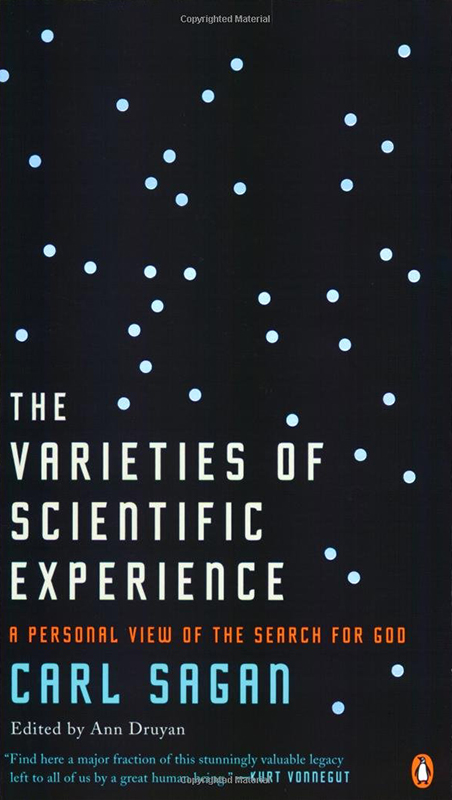
The Varieties of Scientific Experience
Carl Sagan's prescient exploration of the relationship between religion and science, and his personal search for God.

The Vision of the Past
What it Brings to and Takes Away from Science
Teilhard argues that as science deepens its gaze into both space and time, the cosmos reveals itself not as static, but as becoming—a living genesis. By “thickening” our view of time, we see vast slow waves of change—continents shifting, species evolving, consciousness rising—yet origins blur, reminding us that creation is ongoing, happening now, and ahead.
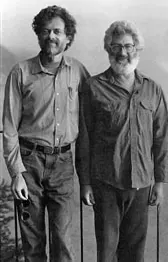
The World Wide Web and the Millennium
Seldom do we have an opportunity to test the accuracy of oracular predictions, but this fascinating conversation between two great thinkers has already proven to be right on target. Speculations include the future evolutionary development of the Internet, whether it is an embryonic intelligence, whether it will merge our minds into a planetary consciousness, or whether it is an alien brain waiting for humanity to cross an evolutionary threshold. Let the bard and the chaos theorist weave an exquisite cybernetic fantasy for you in this evening seminar.

The World and its Double
This workshop, held at the Nature Friends Lodge, revolves around how psychedelics dissolve boundaries, connect us to the transcendental, and reveal the novel realities underlying our perceived mundane existence. Terence explores how shamanic techniques give access to higher dimensions of consciousness, and describes history as an ever-accelerating process approaching an eschatological transformation or singularity.

The Zest for Living
Teilhard de Chardin’s Zest for Living reveals life’s deepest impulse—the will not just to survive, but to “super-live.” This inner drive fuels cosmic evolution toward greater consciousness. To sustain humanity’s future, he urges a renewal of faith and wonder—a universal spirituality that rekindles our passion for being and becoming.

Towards the Unknown
McKenna doth insist mushrooms assist Our minds to resist what we thought we had missed. Beyond normal ken, psychedelics send Our thoughts to transcend, our culture to mend. Though seen as a vice by the mainstream to chide These compounds provide portals to sights inside That propel our race to a posthuman place By opening space for our minds to embrace.

Understanding and Imagination in the Light of Nature
The Great Mystery whispers through psychedelics as it unfurls revelations beyond language’s grasp. Here, ego-bound shells crack open as cosmic minds reborn beyond confines of space and time. We thus commune with the endless Imagination—holographic spirit-stuff whereof worlds are wrought. Invariants of the eternal suffuse temporal shadow-play, the mundane ever aflame in subtler dimensions. All form awakens, ascends, drawn unto consummate transcendence as history’s fever dream blossoms into timeless infinitude.

Understanding the Chaos at History's End
Delivered at the end of McKenna’s first month as scholar-in-residence at Esalen, when he began a new phase in his public speaking career. This weekend workshop provides an early glimpse at Terence’s description of the looming “transcendental object at the end of time,” and the psychedelic insights which led him to become an oracle.

Unifying Principles of Evolution
In the light of the emerging self-organization paradigm, principles may be found which unify the description of evolution in two important dimensions: (1) across the hierarchy of evolutionary dynamics from ontogeny through phylogeny to anagenesis (the evolution of new levels of evolutionary dynamics), and (2) across domains of reality from the physical (cosmic) through the biological (sociobiological, ecological) to the sociocultural domain. Ten such principles, partly containing each other, are tentatively proposed here: Non-equilibrium, spontaneous symmetry breaking, self-reference, self-transcendence, irreversibility, metastability (complementarity of stochastic and deterministic factors), epigenealogical process (cognition and memory), autonomy, symbiosis, and indeterminacy (openness). Examples are provided which are suggestive of the applicability and unifying quality of these principles along the two dimensions.

Walking Out of the Ordinary
(Speech at Sunshine Gardens)
Journey with Terence McKenna into the mystical depths of the psychedelic experience, where alien dimensions beckon and unseen vistas await. McKenna describes fantastical realms beyond ordinary conceptions of reality—worlds that hold promise for expanding human consciousness. He argues persuasively that plant medicines like psilocybin can serve as a key not only to self-knowledge, but to rediscovering our cosmic belonging. McKenna's uncanny ability to articulate the ineffable allows him to initiate audiences into the revelatory power of psychedelic states. Join him on this quest, and you too may glimpse the infinities within.
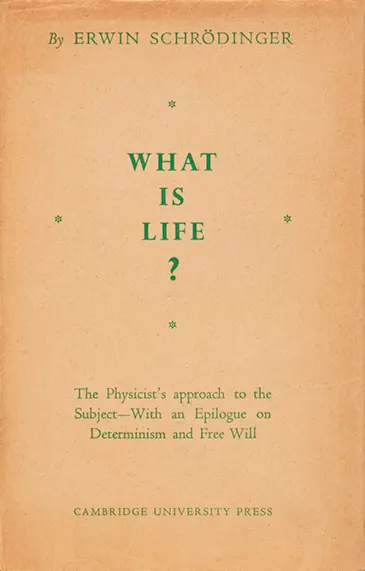
What Is Life?
The Physical Aspect of the Living Cell
This book was based on a course of public lectures delivered by Schrödinger in February 1943, under the auspices of the Dublin Institute for Advanced Studies at Trinity College, Dublin. The lectures attracted an audience of about 400, who were warned "that the subject-matter was a difficult one and that the lectures could not be termed popular, even though the physicist’s most dreaded weapon, mathematical deduction, would hardly be utilized." Schrödinger's lecture focused on one important question: How can the events in space and time—which take place within the spatial boundary of a living organism—be accounted for by physics and chemistry?

What Is Now?
Rupert invites us to take a direct look at the present moment. His succinct investigation leads to stunning revelations about the nature of pure consciousness.

World as Play
Watts presents a core Eastern philosophy of the world as a dramatic illusion, and that it exists for no other reason except to be experienced in a playful manner.

Youniverse Explorer
Douglas Harding demonstrates his “Youniverse” educational toy, which visually depicts the process of investigating one’s identity, starting from the outer viewpoint of galaxies and zooming in to the innermost center.

Zen Reconsidered
Is your mind playing tricks? Alan Watts reveals Zen isn’t about adding beliefs, but shedding the illusion of a separate self. Discover you’re already part of one vast, joyful cosmic dance—experience it directly for profound freedom!